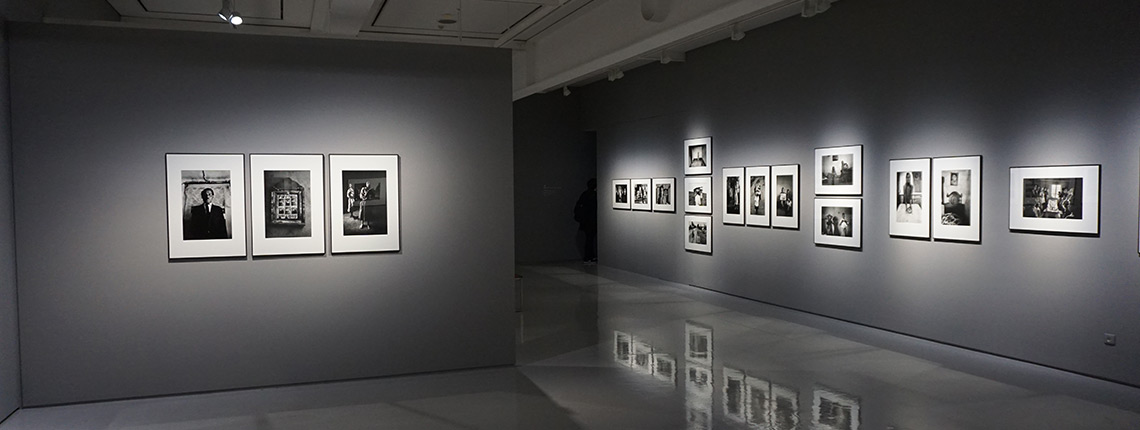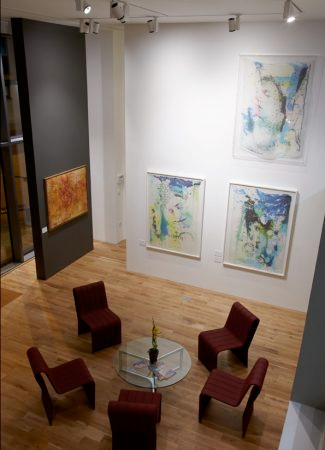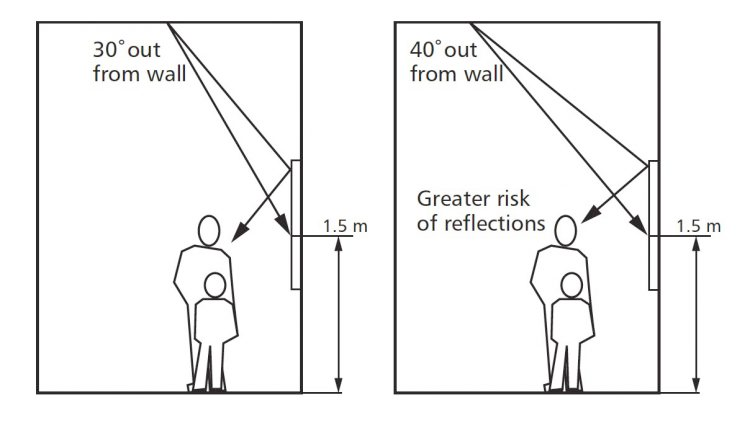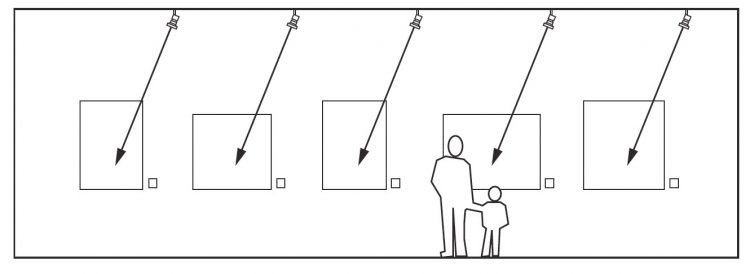

There are an array of things to consider when lighting artwork. If art lighting is done correctly, colours and textures come to life. If done incorrectly, lighting can damage a painting. Light can react with pigmentation and materials causing premature aging and degradation to the artwork.
Artwork can be a big investment. In some of the galleries we light, the paintings are priceless, pieces from great masters that can never be replaced. So correct specification of lighting can be very important. Lighting artwork is largely about preservation as well as aesthetics.
In this post lighting design studio look at the important factors you really need to consider when lighting artwork in a gallery. Many of these things still apply when lighting artwork at home.
Light is electromagnetic radiation, a form of energy. Combined, the colour spectrum produces white light, but just outside of this visible spectrum is ultraviolet and infrared radiation. Many light sources (especially the sun) emit these damaging wavelengths, so it’s important to choose light sources carefully.
To highlight paintings, contrast is key. We know light can guide and focus our attention, so light onto artwork needs to be brighter than its immediate surrounding area. This ratio is important and depends on several factors.
Many galleries have relatively low levels of illumination to limit their artworks exposure to light (Lux-hours). The lower the general light levels the less accent light you need. Less light for limited periods reduces the likelihood of damage to a painting. Considering lux-hours is essential for delicate pieces of artwork such as watercolours.
The Society of Light and Lighting offer advice in their CIBSE lighting guide 8 (LG8) of Illuminaince exposure for different types of pictures – see section 5.2:
Irresponsive – LUX: no limit – LUX HOURS: no limit
Low responsivity – LUX: 200 – LUX HOURS: 600,000
Medium responsivity – LUX 50 – LUX HOURS: 150,000
High responsivity – LUX 50 – LUX HOURS 15,000
Therefore if you are lighting highly responsive, sensitive pieces like watercolours, SLL recommend a maximum of 50lux for up to 300 hours a year.
To get a noticeable contrast you need a minimum ratio of 3:1 of accent light to general light. Although a much higher ratio is sometimes required.
LED light sources are designed to produce light in specific parts of the visible spectrum. Most LED’s do not produce any infrared or ultraviolet light, so generally LED’s are a good light source to use for lighting artwork. That said, because they produce light at particular wavelengths, the way they render colour is not always as good as conventional light sources. (Read to our blog on colour rendering here for more information on this) LED can particularly struggle with rendering red colours (R9 value) so some colours in paintings can look distorted or dull under LED, which is of course a concern. If you are using LED light fittings you should to be looking at a minimum CRI value of 90 with a particularly good R9 value. We’ve found the Xicatio artist series LED chip is a good choice for some applications.
Another consideration is the colour temperature of the light source (For more information on colour temperature click here). It’s true that reds, oranges, browns, gold’s etc look better under warm white light, whereas whites, blues, greys, silvers look better under cooler white. 3000 or 4000 Kelvin is often considered ‘neutral’ and is generally chosen for most galleries. However there are now many ‘tuneable’ or ‘dynamic’ white light fittings available, where you can adjust the colour temperature of the fitting to suit the colour palette of each painting. These are certainly worth considering, although of course they come at a cost and you need to carefully consider a lighting control system.
When it comes to type of fitting this clearly depends on location. Generally most galleries require flexibility because displays regularly change. 3 circuit lighting track and spotlights offer this flexibility, so it’s no surprise many galleries opt for a track and spot system. There are some fantastic track mounted luminaries specifically designed for lighting artwork. There’s also a good range of track mounted framing projectors that use gobos to perfectly frame a painting with light. For guidance on the best track and spot fixtures to use on your project, please feel free to get in touch.
Track and spots are not the only way to light artwork. Fixed linear wall washers provide an even, uniform wash of light for maximum flexibility, but contrast is lost. Spot lights, or linear picture lights, mounted off the wall, local to each picture, is another method that can work well. The size of artwork determines the depth of arm and length of the picture light. Generally picture lights should be 2/3rds the width of the artwork.
Consider incident glare from mounted light fittings. Spectral highlights from glossy finishes such as oil paintings can be a particular issue, or reflections in glass fronted pictures.
This occurs when we you can see the reflection of the light source on the painting, due either to the reflective nature of the medium used or because of glass placed over the painting to protect it.
Avoid Incidence glare by careful consideration of the location of lighting equipment in relation to the viewer. Using snoots, louvers and baffles can also help reduce the impact of glare. We look at several calculations to determine the best location of light fittings to avoid glare and reduce shadowing. A general rule of thumb is to locate the fittings 25-40 degrees from the downwards vertical. Ideally lighting should come slightly form the side, especially for consistency when lighting multiple pieces.


We always recommend the most effective way for determining location of light fittings is to do a mock up.
Avoid direct sunlight on paintings, because of the high levels of UV. It is by far the most powerful cause of premature aging for paintings and is especially important with watercolours and drawings that fade very quickly. Filter sunlight via UV glass for minimum exposure to UV.
In the main, this post is about lighting artwork in galleries, but the same principles apply to lighting artwork in your home. Ok you may not be installing museum type track lighting, but you probably don’t need the same amount of flexibility.